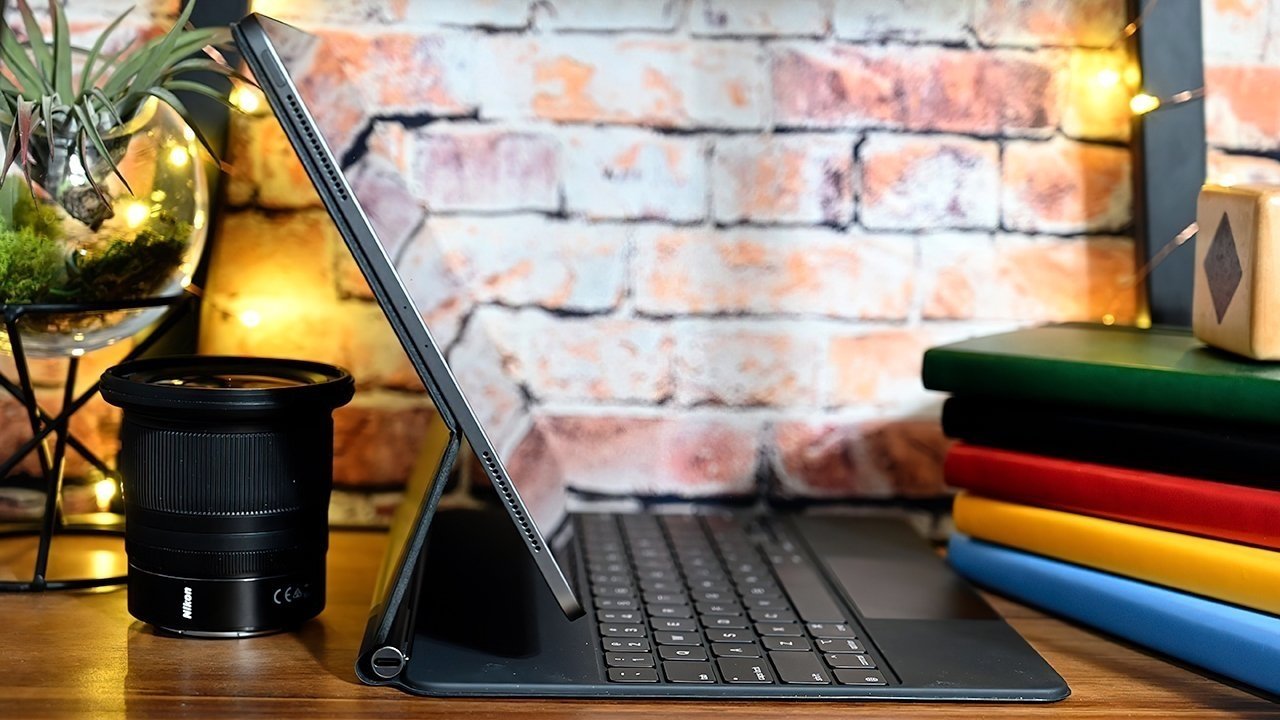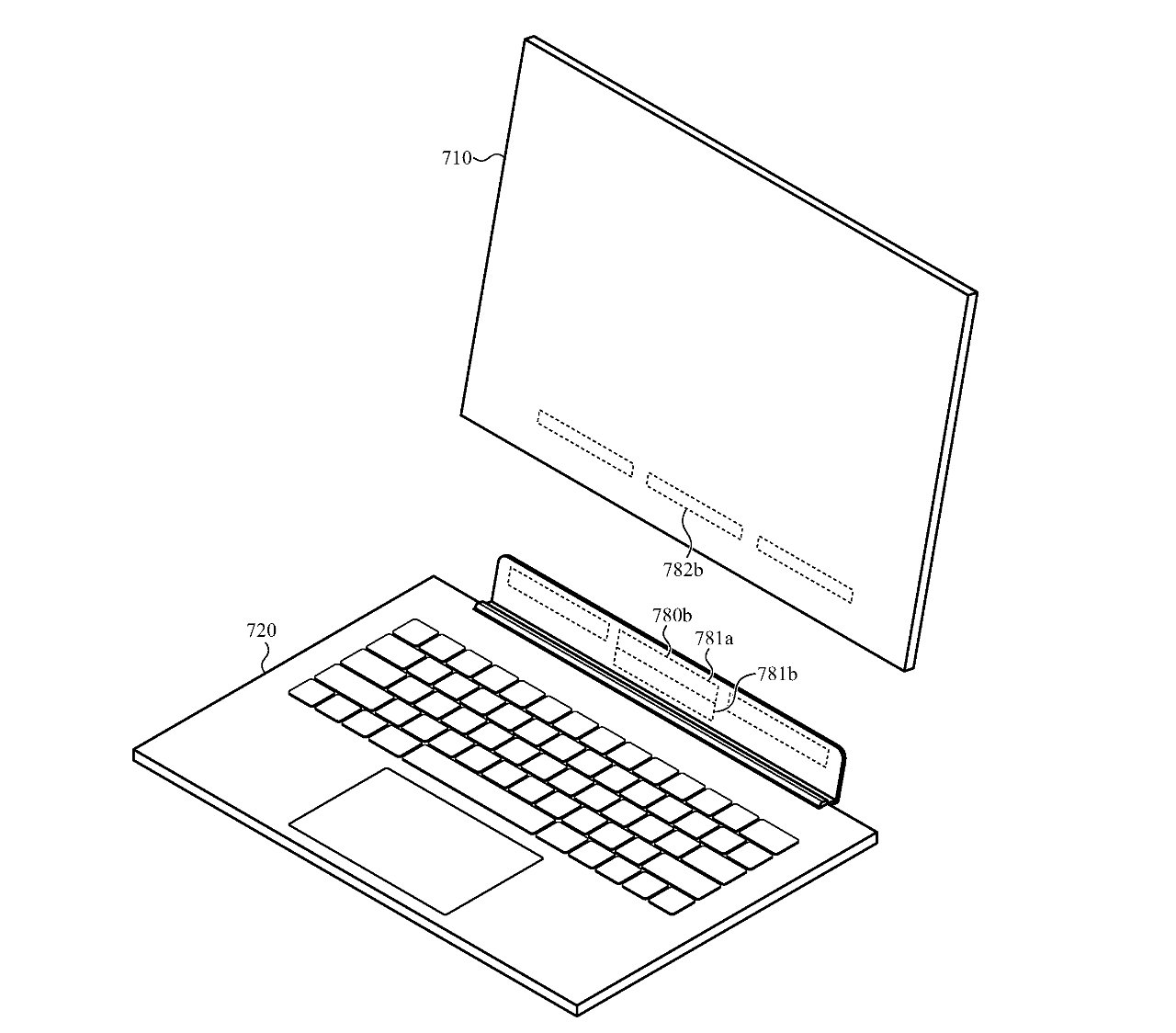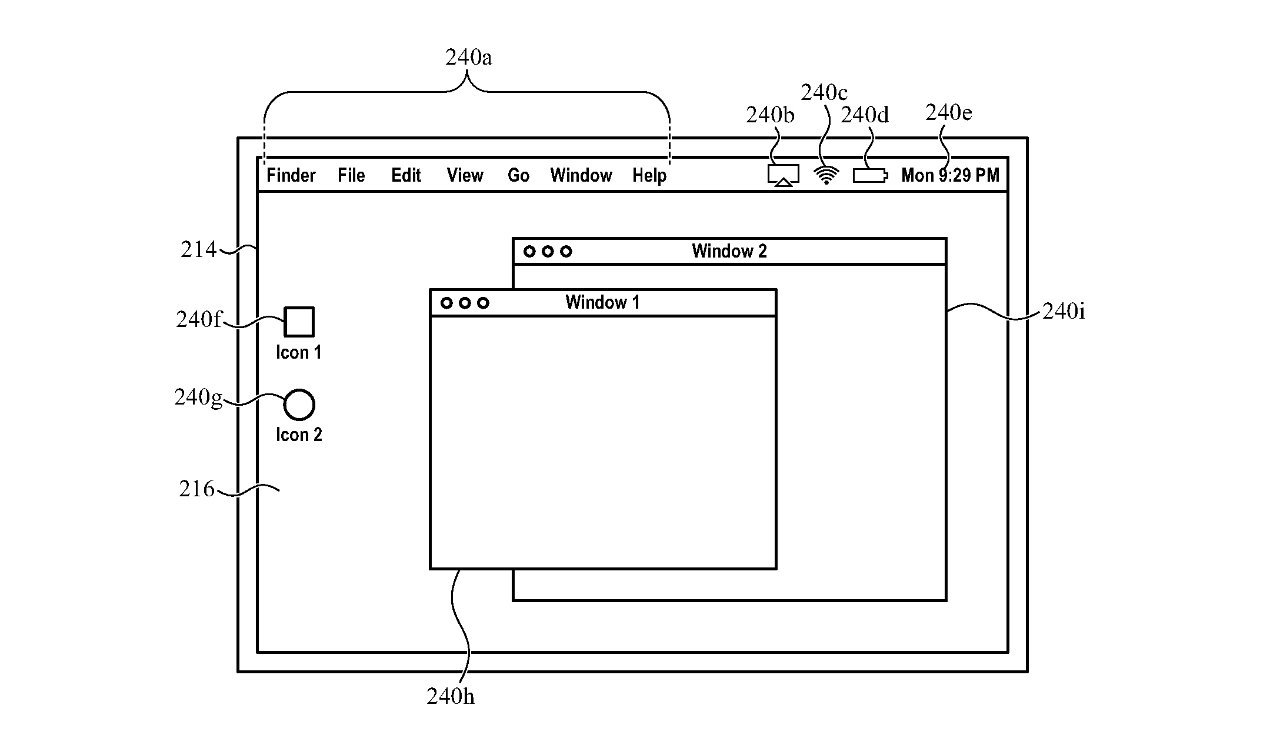
Even as Apple released its distinctive Magic Keyboard for iPad Pro, the company was also researching a more Microsoft Surface-like traditional keyboard arrangement.
It feels as if we've always had the Magic Keyboard for iPad Pro, but it was only launched in 2020. Well after it was released, though, Apple was continuing to research this Surface-like alternative.
"Hinged keyboard accessory having multiple installation modes for a tablet computing device," is a newly-revealed patent that was applied for in July 2020. Despite being filed well after the Magic Keyboard would have been in development, though, this patent references over 40 filings, dating back to 1993.
Each of these tend to cover aspects of a tablet's keyboard solution, such as sliding covers, or hinges. This latest one describes the whole unit, from keyboard to how it would be detached when necessary.
"[It is an] accessory device for a tablet computing device [which] may include a base portion having one or more input devices (e.g., keyboards, trackpads, touchscreen displays, and the like) for providing inputs to the tablet computing device," says the patent.
"The accessory device may include a coupling mechanism for releasably coupling the base portion of the accessory device to a tablet computing device in multiple different installation modes," it continues. "The coupling mechanism may include an auxiliary display for providing a graphical output along a surface of the coupling mechanism."
There's also a note that, "additionally or alternatively, the coupling mechanism may include a recess for receiving a stylus."
It's in the drawings that resemblance to a Surface is clearest. Drawings are never intended to be final product illustrations, only ever an aid to explaining what the patent claims.

However, almost all of the ones in this patent could be drawings of Surface models.
"[The drawings]mshow a system that includes a tablet computing device and an accessory device that are capable of being releasably coupled together in multiple installation modes," says Apple.
"The base portion may include a keyboard having a set of electromechanical keys," continues the patent. "The coupling mechanism may be positioned along a side of the keyboard and may be configured to rotatably couple the base portion to the tablet computing device having a touchscreen display."
There are drawings that are unmistakably Apple rather than Microsoft Surface. However, what makes them unmistakeable is what's shown on the screen.
And these example sketches of the tablet's graphical interface are all clearly showing macOS, not iPadOS, nor iOS.
Some of them show an example a Mac display, "that changes in response to a portion of the touchscreen display being covered by a body section of a coupling mechanism of an accessory device."
The change shown in the drawing resembles the notch in the most recent MacBook Pro range. The Mac's menu bar is lowered, battery indicator and AirPlay/Wi-Fi icons are raised up into the corners, and the gap in between is filled by this "coupling mechanism."
It's peculiar to show macOS in an iPad drawing, but by itself it isn't definitive proof that Apple was also thinking of copying the Surface in terms of putting a Mac into the tablet.

However, it's also not a one-off, chance mistake of the patent inventors grabbing the wrong clip art. The drawings about the display changing because of the coupling mechanism, show quite carefully worked-out variations.
For instance, one shows the mechanism also holding an Apple Pencil in a recessed holder. And another shows the Pencil removed from the recess, revealing a row of tool icons.
Whether it all shows a road not taken — or not taken yet — the patent does leave you appreciating the Magic Keyboard's design more.
This patent is credited to four inventors, including frequent contributor Paul X. Wang. His many previous patents for Apple include one for a projected keyboard that could be used with "Apple Glass."